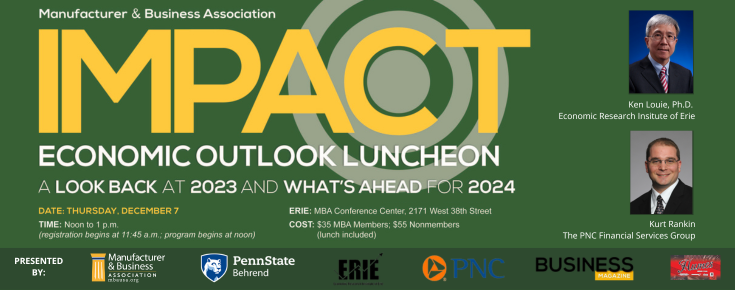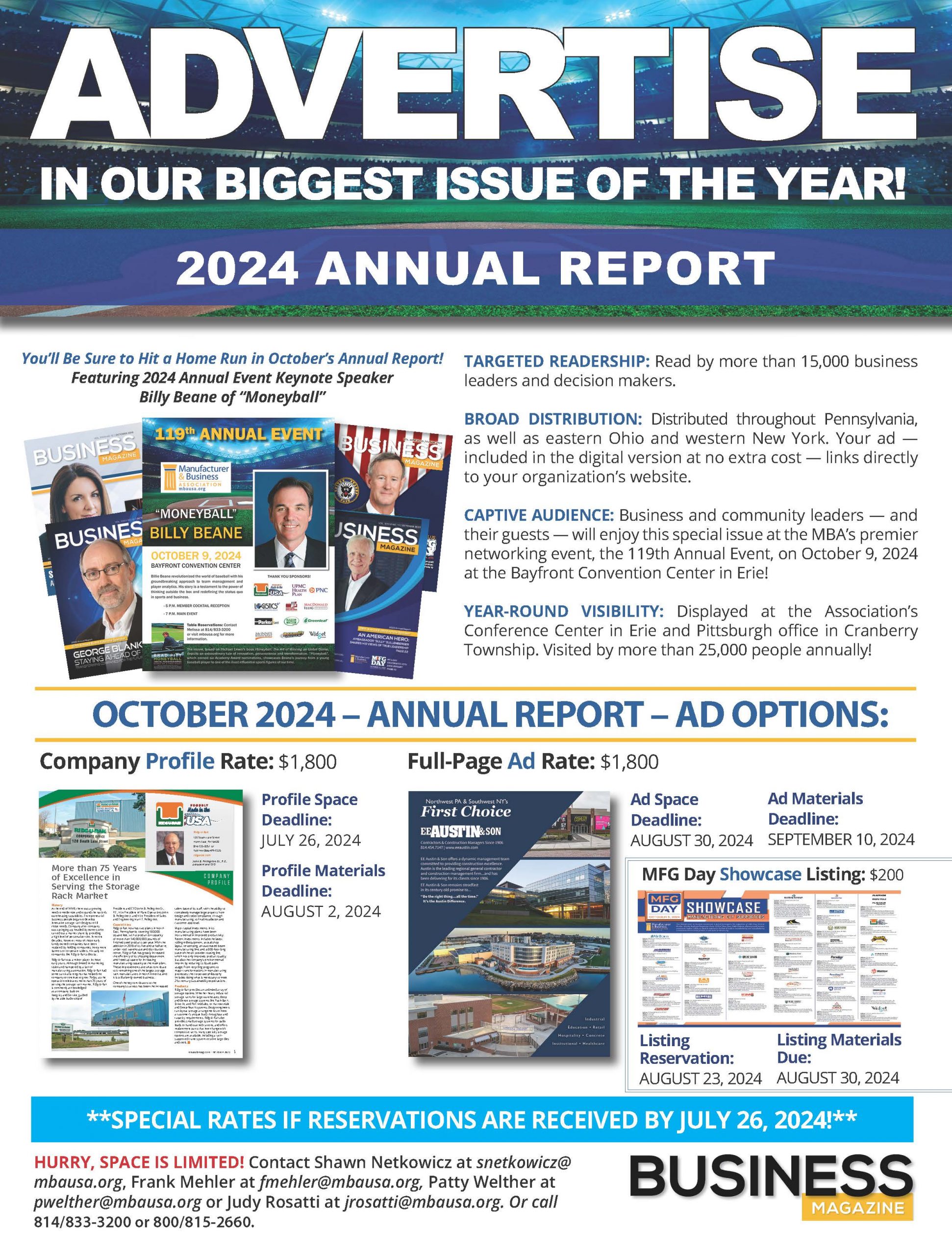
The U.S. economy seems to be defying expectations without a major recession or sharp rise in unemployment. Here, Ken Louie, Ph.D., director of the Economic Research Institute of Erie (ERIE) and associate professor of economics at Penn State Behrend, discusses the statistics and trends that are expected to impact the economic outlook for 2024.
How would you describe the outlook for the U.S. economy as we begin 2024?
The U.S. economy has shown remarkable resilience. So far this year, the economy has added over 1.8 million jobs, averaging over 200,000 new jobs per month, while unemployment has remained below 4 percent. The U.S. labor market has remained strong despite the Federal Reserve’s aggressive monetary policy of pushing up interest rates to slow the pace of inflation. While the Fed has yet to achieve its target inflation rate of 2 percent, the monetary tightening has thus far brought the annual increase in the Consumer Price Index (CPI) back down to 3.7 percent without any significant negative effect on employment.
If these trends continue, the U.S. economy is poised to have a bright outlook for 2024 and the Fed may very well achieve the elusive “soft landing” that it is trying to engineer. Of course, many challenges remain, including unexpected domestic as well as global economic and political events, that may affect the performance of the economy in 2024.
Looking ahead, U.S. economic growth is expected to average 1.5 percent, from 2.1 percent this year. What does your research show?
There seems to be a strong consensus regarding the trajectory of U.S. economic growth in the near term. Projections from the U.S. Federal Reserve Board and Federal Reserve Bank presidents, the International Monetary Fund, and the Federal Reserve Bank of Philadelphia’s Survey of Professional Forecasters all indicate that U.S. real gross domestic product (GDP) is likely to grow by 2.1 percent this year and by 1.3 to 1.5 percent in 2024. It is also noteworthy that the 2.1 percent growth rate projected for 2023 is higher than what the Fed and the IMF had originally forecast at the end of last year, reflecting the current strength of the U.S. economy.
What about the regional economic outlook? How does it compare with the state and nation for 2023?
In terms of economic output (real GDP), the Erie regional economy has rebounded after the COVID pandemic to grow by 3.4 percent in 2021 after having fallen by 6.1 percent in 2020. Although more recent statistics on the growth of output at the local level are not yet available, historical experience suggests that the Erie regional economy tends to lag somewhat behind the state and national economies. Therefore, the real GDP growth rate in 2022 in the state (1 percent) and the nation (1.9 percent), along with the projected growth rate of 2.1 percent for the U.S. in 2023, suggest the approximate upper limits on the growth rate of the Erie regional economy for 2023.
Experts also project unemployment rate to not go higher than 4.1 percent, only a smidgen higher than 4 percent in 2022. What is your assessment of the employment rate? What are you seeing at the local level?
As noted earlier, the U.S. labor market has remained strong. Moreover, despite the Fed’s contractionary monetary policy, the median forecast by the Federal Reserve Board and Federal Reserve Bank presidents is for the U.S. unemployment rate to remain relatively low at 4.1 percent in 2024. The Philadelphia Fed’s Survey of Professional Forecasters also projects an unemployment rate of 4 percent in 2024.
At the local level, the unemployment rate also has been trending downward to 4.2 percent as of August compared to 4.9 percent a year ago. The data on employment also suggest that the Erie economy is still slowly recovering from the pandemic, with total nonfarm employment currently at 97 percent of the pre-pandemic level.
What key areas/current issues should we be keeping our eyes on when it comes to the economic forecast for 2024?
Domestically, key areas/issues to watch include the Federal Reserve’s evolving interest rate policy as it continues its fight against inflation; the ongoing debates within Congress as well as between Congress and the president over fiscal policy; and the potential shifts in economic policy after the 2024 election.
Globally, key issues and events to watch which have potential repercussions on the U.S. economy include the continuing war between Russia and Ukraine and the latest violence in the Middle East; trade and related disputes with other countries including China; and the consequences of an economic slowdown in other parts of the world.
To learn more about the 2024 economic forecast, register for the MBA’s Economic Outlook IMPACT luncheon on December 7 at the MBA Conference Center in Erie at mbausa.org.












